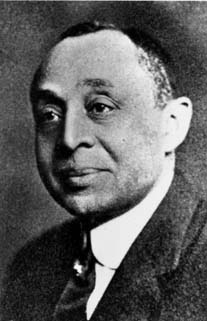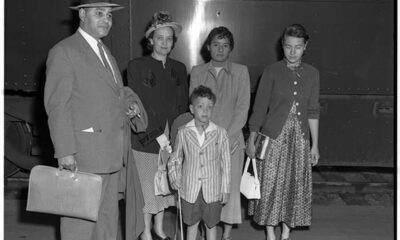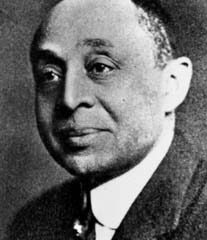Black History
Garnet Douglass Baltimore: A Son of Troy Pt. 2

By Suzanne Spellen
The day after graduation, he was appointed the assistant engineer for the construction of the Albany and Greenbush Bridge, at the time, the most important engineering job in the area. He became proficient in railroad engineering and worked on several important railroad projects. But he would have to travel far from his family and hometown for his next assignment.
In 1884 he was appointed assistant engineer for the NY State Canal system, personally hired by the State Engineer and Surveyor. Garnet’s first assignment was as an engineer in charge of constructing the Shinnecock & Peconic Canal in Suffolk County, Long Island. After the canal was completed, it was back upstate to work on the locks of the Oswego Canal, an essential small canal with a direct connection to Lake Ontario, connecting it to the Erie Canal northwest of Syracuse.
The Geneva NY Gazette newspaper heard of the canal appointment and wrote, “One of the most successful young colored men in the country is Garnet D. Baltimore, a civil engineer who graduated some years ago at the Troy Polytechnic Institute. He now has charge of the enlargement of canal locks near Syracuse. His father is a barber who clips locks in Troy.”
The Oswego’s problem lock on the route was Lock 5, built on quicksand and mud. Over the years, other engineers had tried to stabilize it and failed. So, they gave it to Baltimore in 1877. After studying the problem, Garnet figured out how to stabilize the underlaying mud, using a system of deep pilings, a new cement mixture he concocted and a novel way of using the instability of the soil to work against itself. It was a marvel of engineering. If anyone doubted that the “colored” engineer knew what he was doing, they doubted no longer.
But Troy was calling its son home. By 1891 he was back in Troy with a new job with the city as Assistant City Engineer, and a new wife. He met and courted Mary E. Lane on Long Island, while working on the Shinnecock canal. They waited three years and were married on June 18, 1891. Papers across the state wrote about the wedding because Mary Lane was the daughter of a prominent Nassau county family. She was also white.
Since it was inconceivable to many that a prominent white family would welcome a Negro into the family, rumor had it that Mary and Garnet ran off and eloped. But the Lane family proudly announced that they and the Baltimore family approved of the union. The Albany Morning Express must have been in quite a tizzy because they got Garnet Baltimore’s name wrong, they named his father, and they got his higher education completely wrong. Take a look at the article, it’s one of the very few to ever mention his race.
Baltimore was a workaholic and throughout his municipal career also took on other jobs. He accepted a job with a group of businessmen who wanted to establish a large, new for-profit cemetery on the outskirts of Troy. Forest Park Cemetery was going be “one of the most beautiful and attractive cemetery properties in the state,” according to their sales pitch. Baltimore was named the surveyor/architect/engineer for the project. He worked on the project for three years.
There was already a cemetery on the chosen site, so Garnet incorporated it into his design, as an enormous park, with winding trails, landscaping and a large receiving tomb near an ornate entrance gate of his design. Unfortunately, the businessmen had no idea how to run a cemetery, and the operation went bankrupt several times. Baltimore’s plans were never completed except for the tomb and gate. They are still there, on Parkwood Avenue. Most of the land is now the Troy Country Club’s golf course.
Even though Forest Park was unsuccessful, people had nothing but praise for Baltimore’s designs and ideas. He found himself in demand for other cemeteries and was appointed the architectural engineer for Troy’s Oakwood cemetery, the city’s beautiful non-sectarian park cemetery, high on a hill above the city. Like Brooklyn’s Green-Wood and other park cemeteries, Oakwood has miles of pathways, with planting beds, many species of trees and bushes, lakes and a waterfall, all surrounded by headstones, large monuments, and mausoleums, the resting place of the city’s elite and everyone else too, regardless of race, creed, color or income.
Baltimore laid out several new cemetery sections, his original signed drawings still a part of Oakwood’s records. Other cemetery jobs followed, including Graceland Park Cemetery in Albany and cemeteries in Hoosick Falls, Glens Falls, and Amsterdam, NY. While laying out new sections of the cemetery, he purchased a family plot for himself, where his parents, siblings, and his wife would someday rest.
When Garnet D. Baltimore’s name is mentioned in Troy’s history, it is generally in connection with Troy’s Prospect Park. After hearing about the success of Central and Prospect Parks in Manhattan and Brooklyn, Troy wanted a large, beautiful park too. Every modern and thriving city had a large municipal park. Parks were also considered necessary to good health and a respite for Troy’s working class, which toiled in factories from sunup to sundown six days a week. But because Troy is nestled between high hills and the Hudson, there wasn’t any available land in the city proper, only on one of the hills overlooking the city.
After a long and contentious battle with the various political and moneyed committees, the location of the park was decided – the old Warren and Vail estates high on the hills of Mount Ida, overlooking the southern part of the city. Garnet Baltimore was charged with the design and implementation of plans for this very important park. He toured parks in New York, Boston, and New Haven and came home with ideas for what would be named Prospect Park.
Left to his own devices, Baltimore would have meticulously planned, landscaped, and constructed everything he wanted for the park, including vital infrastructure, amenities, and recreational features. But the city overruled him and opened on July 4, 1902, before anything was completed. They just threw open the newly installed park gates and let the people in. Baltimore was appalled.
He wrote to the city, saying, “No effort was made to make the surroundings attractive or inviting. It is imperative that no feature be tolerated which would tend to cheapen or belittle the character of the park.” Baltimore and his crews worked on the park until 1906 when he left it in the hands of the Parks Department. He continued to write reports for years afterward as part of his position as consulting landscape engineer. Over the years, they would continue to disappoint him, especially in the last years of his life, as he watched the park deteriorate.
Despite this, he truly loved Troy and was involved in many different improvement projects over the years. He was an eloquent spokesman for the growth and beauty of the city and gave lectures and slide shows to local clubs, and civic and church groups. He designed a plan for creating a civic center in the middle of downtown, but it was never acted upon. He was always working, becoming the city’s consulting engineer, often called upon to testify in civil and criminal court cases. He worked for outside attorneys and was hired by other municipalities and lawyers across the state. Preparing materials for testimony and acting as a consulting engineer for cemeteries became his bread and butter after the end of his tenure with the city.
In 1941, Garnet Baltimore placed an ad in the Troy Times Record, looking for new projects. He was 82 years old. In 1943, he celebrated his 84th birthday, an event covered by the newspapers. They wrote about his family history, his education, and many achievements. He received the well-wishes and accolades of his friends and family. He was well-known for his daily walks, where he would chat with just about everyone he met.
Garnet Douglass Baltimore died on June 12, 1946, at 87. He passed away in the family home, where he had grown up and lived for much of his life, still only blocks from a much-expanded RPI. At his death, he was that institution’s oldest alumni. His wife Mary, a tireless worker for women’s suffrage and women’s rights, had already passed on. The couple had no children and they joined his parents and siblings in the family plot in Oakwood Cemetery.
The Troy Record announced his death on the front page. They eulogized him saying, “He was born here, educated here, practiced here, served the public here, died here. He represented Troy: he helped to develop it; he bet on it from birth to death. He was architectural Engineer at Oakwood Cemetery. He laid out Prospect Park. He was probably the greatest surveyor in the city’s history.”
In 1991 RPI established the Garnet D. Baltimore Lecture Series in his honor. The series hosts lectures by prominent African American scientists, engineers and related professionals. Neil DeGrasse Tyson was one of the early guest speakers. 2005 saw Baltimore inducted to the Rensselaer Alumni Hall of Fame. RPI also established the Garnet D. Baltimore Rensselaer Award Scholarship for African American, Hispanic or Native American engineering students with the highest averages in Mathematics and Science. The street where he lived was named for him in 2005, and in 2018, the Garnet Baltimore Hiking Trail, originating in Prospect Park, had its ribbon cutting.
Somehow, Garnet Douglass Baltimore lived a non-racial life during a time of great racial discrimination, even in the North. Described as “tall, handsome and brown-skinned,” he was obviously African American. He seemed to be accepted wherever he went, from his school days, throughout his entire career. No one questioned his credentials or his talent. Even his marriage to a white woman, although noted when they married, was never an issue in his social or business circles.
His name in the newspapers was almost never mentioned in the context of his race, a feat that very few successful black professionals at that time enjoyed. They were always “the colored lawyer,” or “the Negro doctor.” Only once did I find his race mentioned that way in the press. He hobnobbed with the Troy elite, was lauded and welcomed everywhere. He had friends in the notoriously racist Irish wards of Troy, and friends among the rich movers and shakers downtown in the wealthiest parts of the city.
However, this descendant of a proud activist African American family never made racial issues or rights his cause. He must have experienced bigotry during his career. Perhaps not in Troy, where he was well known, but in other areas of the state, and in his travels. He did travel to DC, in 1932, and while there did some survey work for Howard University, perhaps the most well-known historic black college.
That year, he also welcomed John C. Nalle, the son of Charles Nalle, who was dramatically rescued in Troy. His father, Peter Baltimore, had been involved in that rescue. Other than that, I could find no record of involvement with Troy’s African American community, or with larger African American groups or causes. His descendants and people who knew him said that he only cared about the work before him and that he believed that he could be a friend and colleague to all.
Actually, that’s not a bad legacy.











